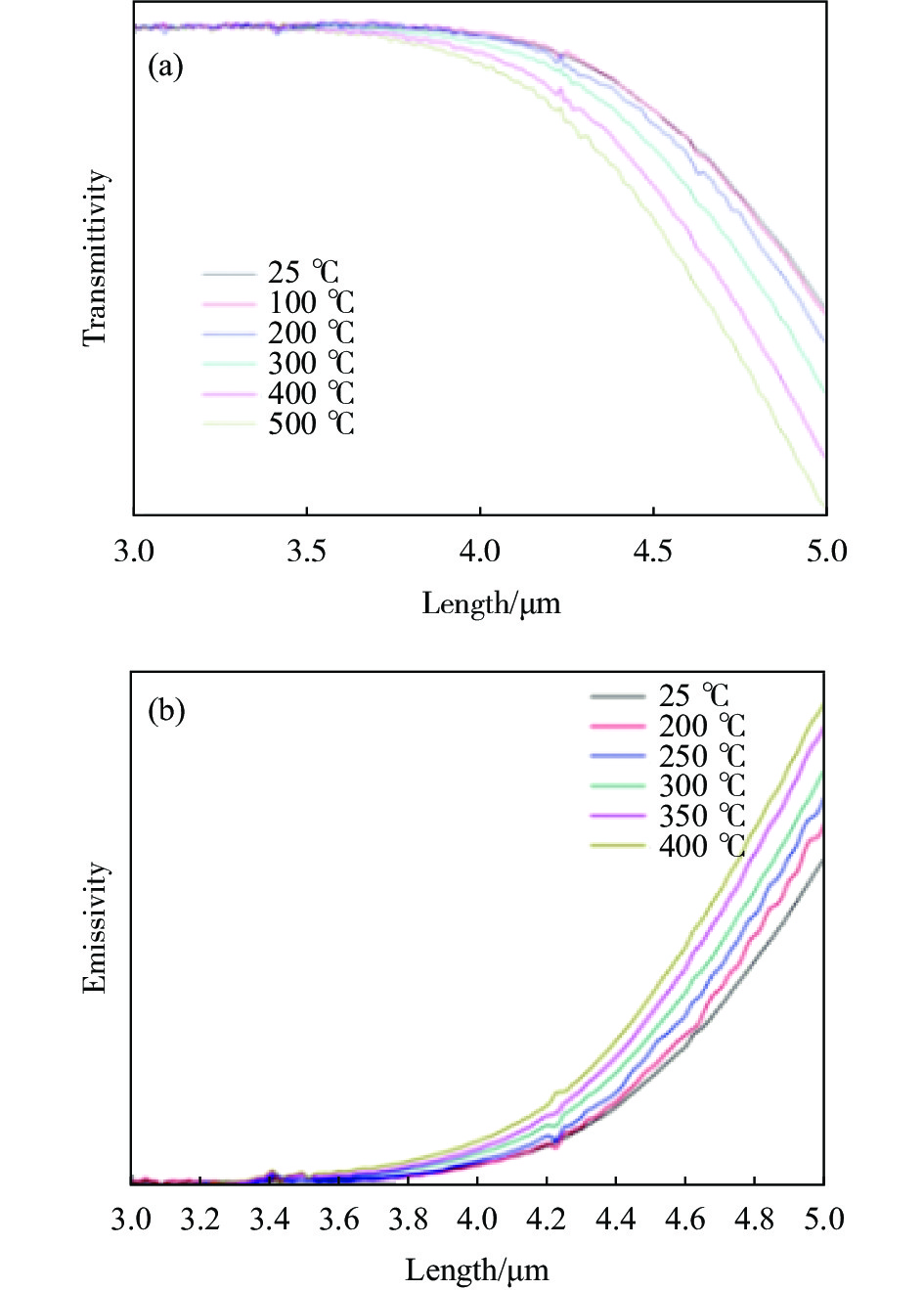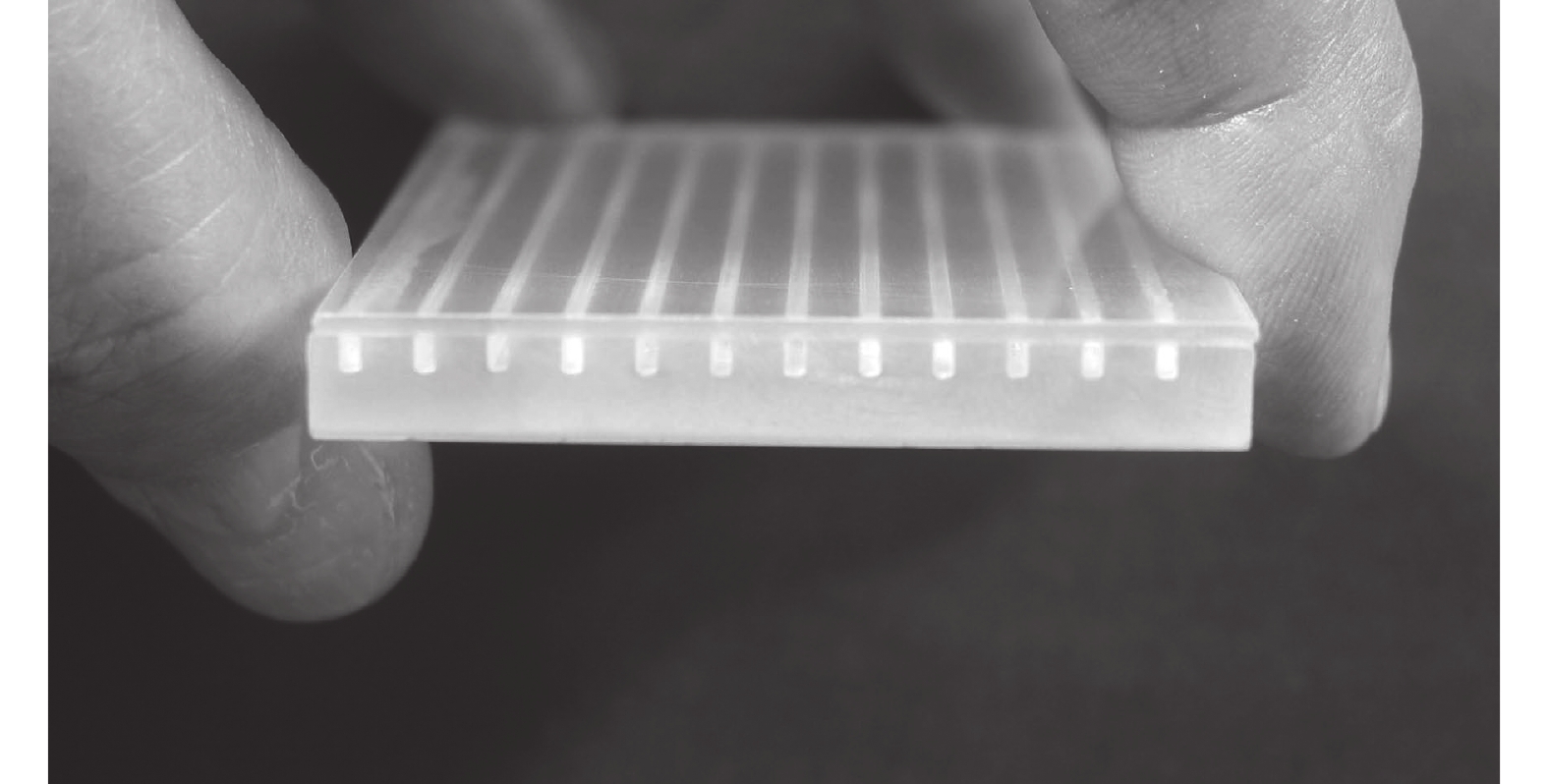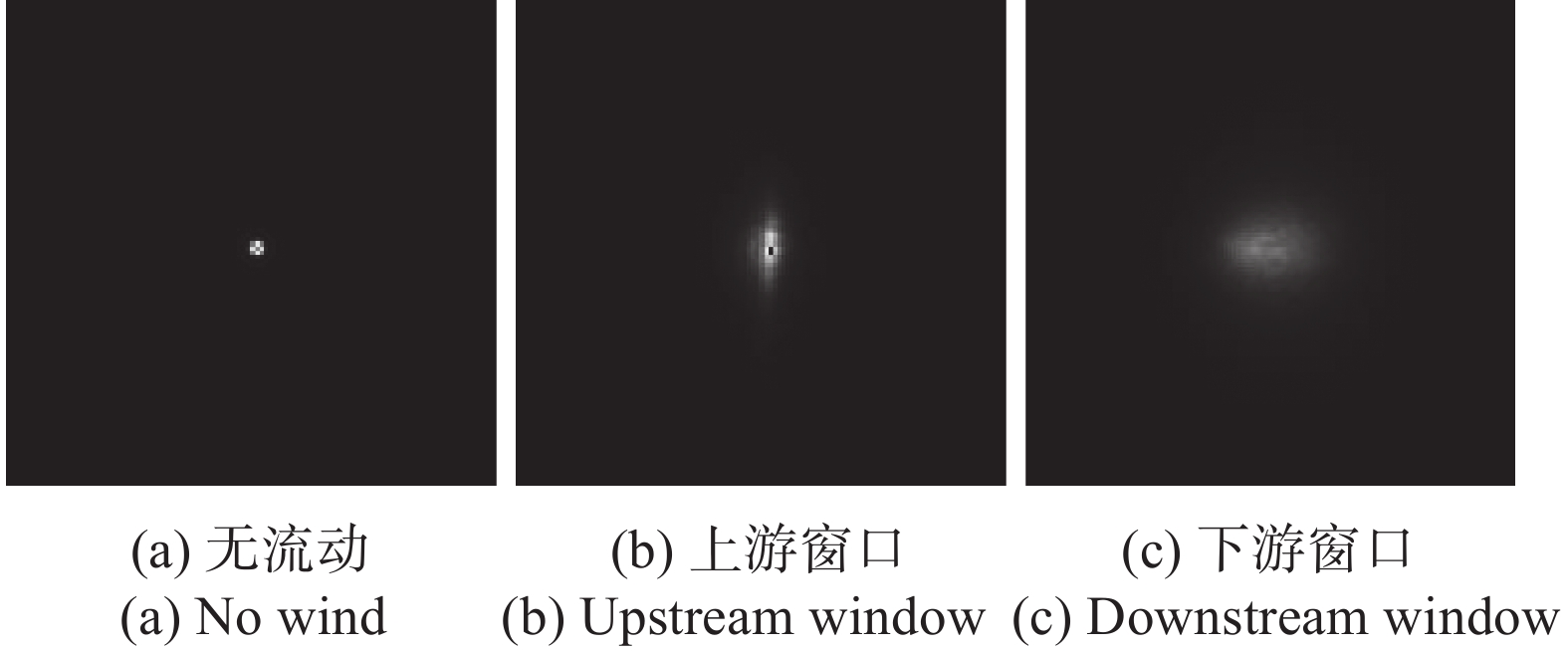-
红外成像探测技术是精确制导的重要手段,随着导弹武器向超音速、高超音速的方向发展,红外成像制导装置工作的气动力热环境越来越恶劣,气动光学效应成为高速红外成像探测的核心问题。
高热流冲击和大气动压力载荷综合作用下,红外窗口产生较大的应力,甚至发生破坏,称为气动力热效应,其决定了高速红外探测系统能不能“活下来”;目标的辐射能量必须穿过高温流场和红外窗口才能到达光学系统,激波、窗口的热辐射干扰影响系统的信噪比,严重时甚至淹没目标信号或使探测器饱和,称为热辐射效应,其决定了高速红外探测系统能不能“看得见”;流场和窗口不均匀的折射率分布和变化影响目标光线的传输,导致目标图像产生模糊、抖动和偏移,称为传输效应,其决定了高速红外探测系统能不能“看的准”。上述三种效应统称为气动光学效应(如图1所示)。
文中主要介绍了气动光学三大效应的基本内涵和理论研究、实验研究等方面的进展,最后对气动光学未来的研究重点进行了展望。
-
在稠密大气层内高速飞行时,红外窗口的气动力载荷和气动热载荷都比较大,随飞行马赫数增大,热流和压力迅速增大。在内外压差的作用下窗口产生机械应力。红外窗口材料的导热能力一般较差,气动加热使红外窗口温度迅速升高,导致窗口内外产生较大的温度梯度,窗口表面不均匀的热流分布导致窗口径向也存在温度梯度,而且窗口的热膨胀还会受到安装结构的约束。在这些因素的作用下,窗口可能产生较大的热应力。此外,高温条件下红外窗口材料的强度还可能降低。在上述多种因素综合作用下红外窗口可能发生破坏。保证光学窗口承受气动力热载荷不发生破坏成为高速弹载红外探测应用面临的首要问题。风洞试验中发生破坏的红外窗口如图2所示。
-
在一定的气动力热载荷条件下,材料力热特性决定了窗口的热影响和力响应,主要影响参数包括:密度、比热容、导热系数、热膨胀系数、弹性模量、泊松比、强度等,在分析计算中采用常温固定值将会严重降低结果的准确性,获取准确的材料力热特性是分析窗口力热响应的基础。
施纯俊等测量了蓝宝石窗口在变温条件下的比热容、导热系数、热膨胀系数,哈尔滨工业大学殷和栋采用激光超声波技术测量了变温条件下的蓝宝石的弹性模量,结果如图3所示,可以看出这些参数随温度变化较大[1-3]。重庆大学成天宝通过建立的脆性材料单轴直接拉伸和压缩强度测试装置测试了CVD硫化锌从室温到600 °C的直接拉伸强度和单轴压缩强度,其拉伸强度在高温下略有上升,压缩强度基本不变[4]。如图4所示。
Klein等收集并分析了一定时期4台力学测试设备红外窗口材料的抗弯强度数据,并假设断裂来自于随机分布的表面缺陷,建立了描述窗口材料破坏概率的韦伯双参数模型,对蓝宝石、金刚石、硫化锌等红外材料进行验证发现,除了氟氧化物玻璃外其他均符合得非常好[5](图5)。美国蓝宝石统计特性和风险降低计划(SSCARR)根据萨德反导系统(THAAD)、标准-2舰空导弹和“箭”-2反导导弹红外窗口/球罩应用背景,通过对1475个试样开展弯曲强度测试、激光热结构测试和强度增强研究,分析了晶向、表面光洁度、加工方法、材料纯度等对强度的影响,获得了大量实测数据,建立了蓝宝石窗口/球罩可靠性预测统计模型,并最终交付了3种导弹窗口(图6)。
-
从20世纪末开始,通过理论分析来设计窗口也逐渐成为了窗口的主要设计方法,大量学者通过理论分析和简化得到了一系列的经典公式[6],在气动力和气动热载荷作用下的诱导应力分别可以通过如下公式表示:
经过进一步推导可以得到表征材料经受热冲击能力的抗热冲击品质因子(FOM),如下所示:
式中:
$ {\sigma _f} $ 为材料断裂强度;$ \kappa $ 为导热系数。上述公式在早期红外窗口设计、红外窗口材料选择中发挥了巨大作用,在现在仍有重要意义。随着数值仿真能力的提升,有限元方法为窗口气动力热效应分析提供了精细和准确的手段,该方法已经在传统机械结构仿真中得到大量应用。李建华等利用有限元方法对红外空空弹头罩热载状态下结构的瞬态温度场和热应力进行分析,结果如图7所示,热应力最大的时刻与温度最高时刻并不重合,与头罩热应力水平紧密相关的是头罩内部的温度梯度而不是传统意义上的高温[7]。刘峰等以超声速氟化镁红外头罩为研究对象,进行了热应力数值分析和电弧风洞试验,发现头罩被拉坏,而非被压坏,即最初破坏位置应位于头罩内表面。与第四强度理论相比,第一强度理论和莫尔强度理论更适于作为超声速氟化镁红外头罩的材料失效判别准则[8]。刘元春等采用有限元分析方法,计算了蓝宝石、硫化锌和氮氧铝3种材料在恒定热流条件下的热力响应[9]。鄂羽佳等指出红外窗口的结构失效包括基体材料的破裂和膜层脱落,韩杰才等采用有限元方法对窗口表面膜层在恒定热流载荷下的热响应和应力响应进行了分析,发现在厚度方向,膜层应力几乎恒定[10-11]。
-
窗口气动力热效应试验手段主要有:热震试验和电弧风洞试验。热震试验主要采用石英灯、燃气喷灯等热源对窗口急速加热,模拟飞行条件下的热冲击环境。电弧风洞试验因模拟的试验环境与飞行真实环境最相似,是现阶段公认的评估红外头罩抗热冲击性能最好地面试验手段。
张义广等通过热震试验模拟整流罩在大气层内飞行速度为2.5 Ma左右所承受的气动热环境,对不同厚度的热压硫化锌的试片进行了试验,5 mm热压硫化锌的试片发生破坏,8 mm热压硫化锌的试片完好[12]。陶永强等对硫化锌试块进行了燃气急热试验,发现正面在加热过程中首先出现非贯穿性裂纹,而背面未出现裂纹,停止加热后背面裂纹由边缘逐渐向中心扩展,并利用最小能量原理建立了热冲击裂纹间距的理论预报方法,预测结果与试验吻合较好[13]。
梁强等指出红外头罩电弧风洞中传统总加热量与总焓值与飞行状态一致的判断准则并不适用,提出以计算弹道环境的头罩热应力作为约束条件,控制风洞试验的最大热应力与弹道状态的最大热应力计算结果尽可能接近的试验设计判据[14]。吴东等针对电弧风洞试验中试验件快速升温导致传统应力应变测量方法误差较大的问题对应变计标定瞬时热输出,测量了风洞试验中窗口模型应变应力变化结果,与有限元仿真结果进行了对比,结果如图8所示,二者比较吻合,解决了传统电弧风洞试验窗口应力应变测量不准的难题[15]。
美国陆军航空和导弹研究发展与工程中心(AMRDEC)为满足在海平面实现高超音速飞行的紧凑动能拦截弹(CKEM)制导窗口需求,开展了窗口选材和安装设计,采用有限元方法分析了气动力热载荷下蓝宝石、氮氧铝和熔融石英3种窗口材料热响应和应力响应分析,分析结果表明:压力载荷的诱导应力相较于热流载荷导致的温度梯度产生的热应力可以忽略不计,蓝宝石和氮氧铝的峰值应力是材料自身强度的2~5倍,熔融石英的峰值应力明显低于材料强度,最终选择熔融石英窗口,在海军空战中心进行了风洞试验验证了仿真分析结果,最终在埃格林空军基地进行了飞行试验验证,飞行试验中导弹峰值速度超过4 Ma[16-17],实现了光学窗口设计、仿真、地面试验、飞行试验的闭环验证。如图9所示。
-
红外成像探测的本质是探测目标与背景之间的辐射能量差异,目前超声速红外探测系统的噪声等效温差一般100 mK以下,而窗口、激波等近场高温辐射源的温度都在几百甚至上千摄氏度,远高于目标背景的温度,这些高温热源的热辐射干扰降低了系统的信噪比,严重时甚至淹没目标信号或使探测器饱和,对红外探测的影响不可忽视。
高速飞行气动加热使红外窗口温度迅速升温产生较大的热应力的同时,还会造成窗口的透过率下降和自身辐射增强,如图10所示,随温度升高蓝宝石窗口的透过率明显降低,自身辐射明显增强。红外窗口自身辐射会使红外图像背景亮度增强,透过率降低增加了目标信号的损耗。
高速飞行时气体压缩导致光学头罩附近产生激波,激波后气体温度和密度增大,气体分子旋转、振动、电子能级跃迁引起气体辐射,辐射光谱覆盖从紫外到长波红外谱段。在空气中占极大比例的N2和O2具有固定偶极矩,不具有红外辐射特性;而在空气中占很小比例的CO2和H2O具有非固定偶极矩,表现出强烈的红外辐射特性,是产生红外辐射的主要气体。如图11所示。
-
高温条件下窗口材料的光学特性是窗口热辐射效应的研究基础。范金太等测试了蓝宝石单晶、钇铝石榴石单晶、镁铝尖晶石陶瓷、氟化镁陶瓷和氧化钇陶瓷5种常见中波红外窗口材料在50~400 ℃的高温透过性能和高温辐射性能[18](图12)。潘枝峰等从高温透过范围、红外辐射系数、高温力学性能以及抗热冲击等角度分析比较了MgF2、蓝宝石、尖晶石、AlON和Y2O3材料,认为Y2O3陶瓷是未来高超声速中波红外窗口/红外窗口的最佳候选材料[19]。王亚辉等通过对蓝宝石高温透射和辐射特性测量,发现相较于透过率下降,自身热辐射影响更为显著[20]。一些学者通过红外头罩/窗口加热试验,研究了氟化镁、硫化锌、尖晶石等窗口在气动加热条件下对红外成像的影响[21-23]。
在窗口材料辐射特性研究的基础上,评估高温窗口热辐射对红外成像的影响成为进一步研究的重点。Whitney T R指出窗口热辐射对红外成像的影响主要包括:非均匀的窗口加热导致焦平面辐照度不均匀和窗口辐射光子噪声降低了信噪比[24]。Edward F. Cross建立了红外成像系统等温窗口辐射响应模型,分析温度分布均匀的高温窗口对成像的影响[25]。Claude A. Klein采用信噪比和噪声等效辐照度来评价高温窗口红外辐射引起的系统性能退化,并推导出了一组用于评估“热窗口”的辐射光子导致系统性能退化的方程[26]。
刘立、王亚辉等基于部分窗口热辐射试验数据建立红外窗口热辐射模型,分析窗口热辐射在探测器上的响应特征[27-28];范志刚等对光学头罩辐射、辐射传输和探测器响应进行研究,基于反向蒙特卡洛法、四阶-龙格库塔法光线追迹法、几何光学等方法实现了红外窗口的气动热辐射效应对成像质量影响建模,对存在温度梯度的窗口自身辐射对红外图像影响、飞行条件下窗口热辐射动态响应等问题进行了研究[29-34]。
窗口热辐射效应试验研究主要手段有高温窗口试验和电弧风洞试验两种。窗口静态加热试验可以获得窗口在特定温度下的辐射特性和对红外图像的影响,由于操作简单成为实验室条件下研究窗口热辐射效应的常用手段,但很难模拟飞行条件下窗口温度变化的动态过程。电弧风洞试验可以模拟飞行条件下窗口辐射的动态变化过程,是最受欢迎的地面试验手段。程梅莎等在电弧风洞上设计了三通试验方案,原理如图13所示,在保证窗口气动加热的同时可以透过目标光线,应用于多型红外探测装置窗口热辐射效应试验,但存在三通内壁高温辐射影响成像效果问题[35]。陈连忠[36]等利用电弧风洞对红外窗口进行气动加热,模拟了窗口热辐射噪声淹没目标信号的过程,结果如图14所示。
抑制窗口热辐射效应是高速弹载窗口设计的核心问题。殷兴良指出采用积分时间自适应技术可以防止探测器饱和,提高成像质量[37]。红外窗口的热辐射干扰通常伴随着接近目标的过程逐渐增强,根据接收到的窗口辐射能量动态调整积分时间,可以在保证足够探测能力的同时使探测器工作在最佳响应范围,提高成像质量,该方法已经在工程实践中得到广泛应用。
一些研究指出采用共形头罩、在窗口表面镀低发射率膜层、改变窗口厚度等手段也可以在一定程度上降低窗口热辐射干扰。薛文慧等发现在相同工况下椭球面以及抛物面形头罩产生的干扰明显低于球形整流罩[32]。刘元春等研究发现在CVD硫化锌窗口表面镀HfO2膜、在蓝宝石窗口表面镀氧化钇膜可以延迟头罩辐射干扰饱和的时间,提高头罩抵抗热辐射干扰的能力[38-39]。王慧等发现相同飞行工况和时间内,增加整流罩厚度可以降低头罩的温度,有效抑制头罩产生的红外热辐射[40]。李一涵等指出一定的飞行条件下存在一个最优的窗口厚度,可以使红外探测的灵敏度达到最佳[41]。还有一些学者探索采用图像校正处理方法抑制窗口的热辐射效应,王超等提出采用二次非线性回归分析法进行窗口辐射噪声修正提高系统信噪比[42],洪汉玉等提出了一种基于梯度分布和暗通道的窗口辐射校正方法[43]。
采用窗口制冷技术可以有效降低改善窗口所处气动热环境或降低窗口温度,是最为有效地抑制窗口热辐射效应的手段。窗口制冷方法主要包括外部喷流制冷和内部冷却,外部冷却方案冷却气流与原边界层内的气流混合,形成剪切/混合层复杂流动,可能影响目标光线的传输。R. Gentilman等提出通过使用折射率匹配的玻璃粘接,内部开一组冷却剂通道,通过主动冷却带走气动加热传导给窗口的热量[44]。冷却窗口如图15所示。
-
随着飞行速度提高,激波辐射干扰对红外成像的干扰变得不可忽略。国外从试验和理论两方面对高温气体辐射特性进行了大量研究[44-49]。建立了HITRAN数据库、高温气体光谱数据库CDSD和HITEMP数据库,开发了空气非平衡辐射特性计算程序NEQAIR,在工程中得到广泛应用。通过NEQAIR计算得到的CO2在4.3 μm附近的光谱透过率与实验值对比如图16所示。美国Science Applications International Corporation 开发研制的激波辐射仿真软件,它包括:EXTC流场计算模块、SIRRM-Ⅱ辐射传输模块和NORSE热辐射数据库。并对某飞行器激波辐射及其对信噪比的影响进行了分析预测。
针对高温气体辐射特性,国内也有大量学者开展研究。董士奎等基于HITEMP数据库,采用统计谱带模型计算了300~3000 K范围内的水蒸气辐射光谱[50]。杨乾锁等利用激波管加热技术测量了高温空气在宽波段和几个特定中心波长的绝对辐射功率[51]。闫鹏利用超高分傅里叶变换光谱仪系统测试了浓度和温度变化的条件下CO2气体发射光谱特性,结果如图17所示,其光谱辐射能量在4.3 μm附近随温度和浓度增加明显增大[52]。张军等在高频等离子体风洞上获得了CO2中波和长波波段的红外辐射谱图,结果如图18所示,发现辐射峰随温度的升高向长波方向展开[53]。
一些学者通过对流动解算、气体辐射特性和辐射传输的研究,完成了高速飞行器从流动到辐射的全过程计算方法的建立,并对典型飞行条件下的流场辐射特性进行分析,得到了一些非常有用的结论:(1)流场红外辐射以CO2分子2.7 μm和4.3 μm谱带发射为主,4.3 μm谱带最强;(2)激波流场为光学薄介质,其对目标辐射的吸收可以忽略;(3)辐射噪声和飞行速度、气体成分等密切相关,当高度减小、马赫数增大时,激波辐射噪声显著增大[54-59]。
激波辐射具有强烈的光谱选择性,根据这一特点,在成像系统中设计合适的滤光片,可以减小激波辐射对目标探测的影响,提高探测的信噪比[57]。此外激波辐射在飞行器头部最为显著,将红外探测装置布置在远离头部位置,可以在一定程度上减弱激波辐射的影响。
-
光学窗口传输效应来源有3方面:(1)在气动力热载荷下窗口产生变形,窗口面型偏离设计状态;(2)热光效应导致窗口气动加热所产生的非均匀温度分布引起窗口折射率不均匀分布;(3)弹光效应导致窗口气动力热载荷诱导应力引起窗口折射率不均匀分布。热光效应和弹光效应作用下窗口的折射率可以表示为:
式中:
$ {n_0} $ 为窗口材料的标准折射率;$ \alpha $ 为热光系数;$ \Delta T $ 为窗口温度的变化量;$ \;\beta $ 为弹光系数矩阵;$ \Delta \sigma $ 为应力的变化量。流场传输效应来源于流场中空气密度的不均匀分布和密度脉动。流场中气体的折射率可以表示为:
式中:
$ {K_{GD}} $ 为比折射度常数;$ \rho $ 为流场中空气密度;$ {\rho _0} $ 为标准空气密度。折射率场中光线传输可以表示为:式中:
$ s $ 为光线传播路径上的弧长;$ r $ 为光线矢径;$ n $ 为折射率;光线通过折射率场的光程可以表示为:除气动力热载荷引起窗口变形产生的传输效应外,窗口弹光效应、热光效应和流场引起的传输效应本质上都是介质折射率的变化导致光线传播过程中产生偏折和光程差,进而引起目标图像偏移、抖动和模糊。
-
传输效应的来源主要是光学窗口和流场,针对窗口传输效应,以哈尔滨工业大学范志刚课题组为代表的一批学者对气动力热载荷下光学窗口面型变化、弹光效应和热光效应引起的成像质量下降进行了大量理论研究[60-68],采用光线追迹法、折射率重构、有限元方法等对球罩、共形头罩、多面体拼接窗口、平窗等不同形式窗口的传输效应引起的点扩散函数峰值大小及峰值位置(像偏移)变化进行了仿真分析。发现:光线在窗口上的入射角的大小是影响成像质量的一个重要因素,指出:一般情况下热光效应在窗口传输效应中占据主导作用。马昊军等采用离子体射流中对二维尖劈模型中的石英窗口进行加热,利用径向剪切干涉技术测量了气动加热条件下红外窗口引起的传输光束波面相位、点扩散函数和斯特尔比的变化[69]。
-
以美国为代表的西方军事强国对传输效应研究起步较早,在传输效应机理、仿真分析和校正方面进行了大量研究,建立了比较完善的传输效应数学模型,开发了AOQ Code、AOTS等传输效应仿真软件,实现对气动光学引起的像偏移、像模模糊的分析预测,通过像点半径、相位、斯特列尔比等定量评价传输效应的影响[70-71]。
我国在气动光学方面进行相关研究起步于20世纪90年代末,远晚于国外。2003年,殷兴良出版了《气动光学原理》一书,系统地介绍了气动光学效应的基本理论、数值模拟、校正方法和试验验证[37]。同一年,李桂春编著的《气动光学》出版,系统地论述了在高超声速空气动力流场中光束传输的原理和特性,阐明了气动光学基本理论,又提供了风洞模拟试验中的各种气动光学效应的测量方法[72]。这两部著作为国内气动光学研究人员提供了理论支持和试验指导,掀起了国内气动光学问题研究的高潮。
流场传输效应涉及多个学科领域,由于流动的复杂性,其理论研究难度极大,如何将传输效应模型与流场变量关联起来是其中的关键问题。Sutton采用统计理论将湍流统计量和气动光学畸变统计量进行关联[73]。Lee等通过研究指出瞄视误差和斯特列尔比没有正相关的关系,即使斯特列尔比接近1,瞄视误差也可能很大,并通过试验证实了这一理论[74]。
闫溟等针对流场传输效应数值模拟需求,发展了相应的RANS计算方法和光波折射率脉动值的输运方程,用以模化脉动密度对光学成像的畸变效应[75]。针对影响光学传输预测的流场湍流脉动量预测问题,潘宏禄等选取平板、压缩拐角、凹腔流动模型,采用大涡模拟(LES)方法给出脉动工程模型的系数修正结果,该结果已经应用于型号飞行器的光学窗口气动光学效应预测中[76]。刘洪等提出了适用于高速流场气动光学数值模拟的RANS/DSMC混合算法,全局时均流场采用RANS方法,局部流场的脉动量采用DSMC进行数值模拟,极大提高了计算效率,并采用超声速环境下尖劈模型对比试验结果论证了算法的合理性[77]。李波在传统(RANS/DSMC)混合算法的基础上开发出了RADAO 混合算法[78]。吴琳用高折射率梯度门限提取流场高折射率梯度区域,当超过70% 的折射率梯度被忽略时,重建的折射率场仍能捕捉到绝大多数气动光学畸变,表明高超声速流场的高折射率梯度区域是产生气动光学畸变的主要原因[79]。
结合高速导弹红外探测背景,不少学者对超声速流动和光学传输效应进行了数值模拟研究。冯定华等指出凹腔流动的剪切层结构将引起光线抖动,导致严重的波面畸变,明显降低光强斯特列尔比, 斯特列尔比随空间和时间变化[80]。陈勇等的研究表明凹窗流动的边界层、分离剪切层、激波和旋涡等是影响光束传输的重要因素,并研究了窗口深度对传输效应的影响[81]。朱志斌等研究了喷流对凹窗的影响,流动由层流向湍流的转捩过程产生大尺度的湍流结构会引起流场剧烈密度脉动,严重影响光线传输[82]。邢博阳等研究了攻角、飞行高度、来流马赫数、入射光线角度、波长等对流场传输效应的影响[83-87]。史可天等对凹窗、凸窗和球头3种光学头罩的光学传输效应进行仿真。通过瞄视误差、斯特列尔比、含能半径等气动光学效应参数描述了流场引起的成像畸变,发现从成像偏移的角度讲,凹窗模型最大,凸窗模型次之,球头模型最小;从成像模糊的角度讲,凹窗模型最大,球头次之,凸窗模型最小[88]。如图19所示。
-
在气动光学试验研究方面,美国气动光学评价中心(AEDC)开发了一套基于正交轴的全息流场测量系统,可以实时观察流场的结构和波前畸变[89],介绍了在气动光学效应风洞试验模拟中面临的4大技术难题:(1)地面模拟飞行环境十分困难,在很多情况下甚至是不可能的;(2)由于流动的空变和时变特性,气动光学试验测量的物理量和数据量十分巨大;(3)对测量的空间和时间分辨率要求很高;(4)影响测量结果的干扰因素很多,比如振动、附加流场干扰等,最终的测量结果很难将其区分开。R. Deron等采用Shack- Hartmann波前传感器在风洞中测量了14~22 km 3.7 Ma飞行条件下超音速双锥体侧窗的流场传输效应,研究了飞行高度、窗口坡度和视线角角度对传输效应的影响[90],如图20、图21所示。Jumper对Shack-Hartmann 传感器、Malley探针、基于背景纹影技术的波前传感器(BOS-WS) 和纳米粒子示踪技术(NPLS)等常用的气动光学试验研究方法进行了详细介绍[91]。
郭隆德采用全息测量技术对高速拦截弹导引头的二维流场折射率进行了测量,采用光栅干涉法测量了其三维密度场,并利用哈特曼传感技术测量了气动光学效应,提出了波长相关性原则[92]。李文煜研究了非接触气动光学测量方法,给出了高速线阵 Shack-Hartmann波前传感器的设计方法[93]。国防科技大学易仕和课题组以超声速红外窗口气膜冷却为应用背景,对超声速湍流边界层、超声速混合层等的流动现象和光学特性进行了深入研究[94-102],采用基于纳米示踪的平面激光散射(NPLS)技术及基于背景导向纹影的波前传感技术(BOS-WS)等高分辨率气动光学畸变与抖动测量方法,对超声速湍流边界层、超声速混合层、有无喷流的超声速后台阶模型等的流动机理开展了一系列试验研究,并测量了其气动光学效应,对马赫数、喷流压力、后台阶高度等对流动和光线传输的影响进行了分析。针对高速飞行器气动光学地面试验很难模拟飞行条件的问题,测量不同雷诺数对应状态的光程差,通过分析光程差的均方根值与雷诺数之间关系,证明雷诺数是影响气动光学效应的一个相似准则数。姚向红等采用哈特曼传感器和剪切干涉仪两种手段在3 Ma连续超声速风洞中进行了光学传输效应的试验测量,结果表明导流板可明显抑制风洞洞壁边界层干扰,两种测量手段测试结果相近[103]。
-
认识流场传输效应对光学探测带来的不利影响, 并进行抑制和校正,以提高工程应用中目标探测的准确性。
在流场传输效应抑制研究方面,Wissler和Roshko指出层流流场平稳、光学质量最好;完全湍流后虽然光线偏折严重,但空间流动结构是各向同性的,光学脉动较为规律;转捩区内流动现象复杂,对光线传输最为不利[104]。根据壁面冷却可以减少流动脉动的原理,Sontag 和Gordeyev等定量研究了平板壁面冷却对光线穿过流场的光差的影响[105]。White 和Visbal对壁面抽吸、冷却、速度振荡等方法采用数值模拟进行详细对比,发现上述方法减弱流场传输效应的效率很低[106]。
吴琳等发现波长对气动光学效应有重要作用,采用长波段波长有助于提高成像质量,并且多数情况下,大涡造成的气动光学效比小涡应严重,控制湍流尺度也可提高成像质量[86]。丁浩林等通过超声速喷流光学头罩光学畸变试验测量研究发现施加微型涡流发生器可以较为有效地抑制气动光学高阶畸变并且提高波前的稳定性[107]。易仕和针对红外窗口气膜冷却时喷流带来的附加传输效应,提出了剪切层折射率匹配和压力匹配的设计理念,既可以将外部高温气流与窗口隔开,对窗口起到冷却作用,又可以降低冷却喷流与外流混合的复杂流动对光线传输的影响[108]。李波针对光学窗口外形参数对其气动光学性能的影响进行了研究,采用遗传优化算法实现对高速飞行器光学窗口的优化设计[77]。
流场传输效应校正主要方法包括自适应光学矫正方法和图像处理校正方法。早在2003 年夏天,美国圣母大学就开始在风洞中进行简单的自适应低带宽的气动光学矫正尝试,并建立了自适应矫正系统,对简单二维热射流采用前向反馈系统,将成像时均质量提升38%[109]。SY Technology Inc以弹载应用为背景研制成功的微型高频光电子自适应校正系统,应用光学干涉原理进行高速流场引起波前畸变的检测,采用微光学技术和照相平板印刷技术制成校正光电子器件,其校正工作频率可达几百千赫兹,基本满足高速飞行器气动光学效应校正的需要[110]。张丽琴等介绍了气动光学效应的光电校正方法,并对各种方法进行了比较分析[111]。
杨荣慧等针对气动光学数字图像校正工程应用对算法适用性及实时性的要求建立了基于先验知识的数字图像校正算法,校正时间达到毫秒量级[112]。2014年,华中科大张天序教授及其研究团队在图书《气动光学效应与校正-原理、方法及应用》,全面介绍了气动光学效应的基本原理,深入分析研究了成像谱段优选、热辐射校正、单帧图像和序列图像校正恢复、相位校正恢复、模型和先验知识约束的智能校正恢复以及数字/光电混合校正等方面的新方法、新技术[113]。
-
西方军事强国尤其是美国,在气动光学3大效应方面都有深入研究,对其产生机理、计算仿真、试验验证及校正等方面都有了比较成熟的理论,这些研究成果在军事、民用等多方面得到了应用。国内气动光学研究起步较晚,经过大批学者的研究,虽然取得了巨大进步,但与国外相比仍存在较大差距。在今后的研究中,以下几个方面值得注意:
(1)红外窗口在气动力热载荷下的温度响应和力学响应问题的研究上比较透彻,目前建立了涵盖结构设计、仿真分析、地面试验、飞行试验等全过程的设计分析验证手段,基本可以支撑高速红外探测系统研制。但对窗口材料变温力热特性研究较少,尚未形成足以支撑工程应用的完备的窗口材料的力热特性数据库,此外红外窗口的强度与制造方法、加工工艺、杂质含量等密切相关,需要通过大量样本的测试建立材料失效模型。窗口材料的高温光学特性研究存在同样的不足,在今后需要重视窗口材料基础力热光学数据的测量和研究,充分发挥材料的性能极限以满足随飞行速度提高日益严酷的气动力热环境。
(2)在窗口热辐射研究方面,虽然目前已经有不少学者提出了窗口辐射仿真分析模型,但大多缺少地面试验和飞行试验的验证,尚不能满足工程应用需求。日益显著的窗口热辐射干扰成为制约末制导阶段导弹飞行速度的提高的主要因素,工程上传统的以窗口平均温度或最高温度评估窗口热辐射效应的方法已不满足使用需求,因此,需要结合理论分析、数值模拟、试验测量与验证等手段建立一套考虑窗口温度梯度的动态窗口热辐射效应分析手段。
(3)窗口制冷技术作为最为有效的抑制窗口热辐射的手段,是红外探测应用于未来更高飞行速度的导弹武器的核心技术之一。对于外部喷流制冷,如何抑制其复杂流动带来的传输效应影响是关键。对于内部冷却技术,尤其值得注意的是金刚石窗口的应用。随着人工合成金刚石窗口技术的日益成熟,利用金刚石极高的热导率进行边框制冷是今后窗口冷却技术中最有前景的发展方向。
(4)由于目标光线需要穿过流场才能被光学系统接收到,高温激波辐射源不可避免地出现在光学系统视场内被“看到”,利用激波热辐射强烈的光谱选择特性对激波辐射开展更为精细的光特性研究,进而采用光谱滤波等技术抑制其对热辐射噪声是未来解决激波热辐射效应的主要技术手段。
(5)窗口和流场传输效应的研究目前主要集中在机理研究方面,尚不足以支撑工程化应用。但随着导弹武器飞行速度的提高,流场传输效应将成为影响高速红外光电系统探测制导精度的核心问题。
(6)国内现有的风洞试验设备主要包括电弧风洞、常规风洞、燃气风洞和激波风洞等,基本都是根据力学试验和热学试验需求建设的,很难满足气动光学效应试验需求,尤其是整机级试验。电弧风洞试验一般马赫数较低,很难模拟飞行试验流场,基本用于窗口的气动热环境;常规风洞来流总温很难达到飞行试验水平;燃气风洞基本能模拟飞行试验的流场,但其流场介质中CO2和水蒸气含量较高,一般无法用于光学试验;激波风洞连续运行时间短,难满足气动光学试验要求。因此,亟需建设专门的气动光学效应风洞试验设备,支撑气动光学研究和地面试验验证。
-
气动光学是一门涉及流体力学、光学、工程热物理、图像处理等多学科知识的交叉学科,气动光学效应是高速红外探测与传统红外探测的本质区别,也是决定红外探测应用于高速导弹可行性的关键因素。目前气动光学效应研究取得了极大进展,但在试验技术和应用研究方面还需要进一步加强,适应红外探测高速化发展方向。
Research progress and thinking of infrared aero-optical effect (Invited)
doi: 10.3788/IRLA20220228
- Received Date: 2022-03-30
- Rev Recd Date: 2022-04-16
- Accepted Date: 2022-04-16
- Publish Date: 2022-05-06
-
Key words:
- infrared detection /
- aero-optics /
- wind tunnel /
- numerical simulation /
- image correction
Abstract: Infrared imaging detection technology is an important means of precision guidance. With the development of missile weapons to supersonic and hypersonic, the working environment of infrared imaging detection devices is worse. The structure safety of infrared windows faces great challenges because of the severe aerodynamic thermal environment in high speed flight. The radiation interference of high-temperature radiation sources such as shock wave and window seriously affects the infrared detection ability. The transmission effect of flow field and window reduces the detection and guidance accuracy. Aero-optical effect is the most essential difference between high-speed infrared detection and traditional infrared detection, and it is also the key factor to determine the feasibility of infrared detection applied to high-speed missiles. This paper mainly introduced the aerodynamic thermal effect, thermal radiation effect, transmission effect and their influence of high-speed infrared imaging detection, expounded the progress of aero-optical effect in mechanism research, test research, numerical simulation and correction technology, and finally gave the thoughts and suggestions on the research of aero-optical effect of high-speed infrared detection.






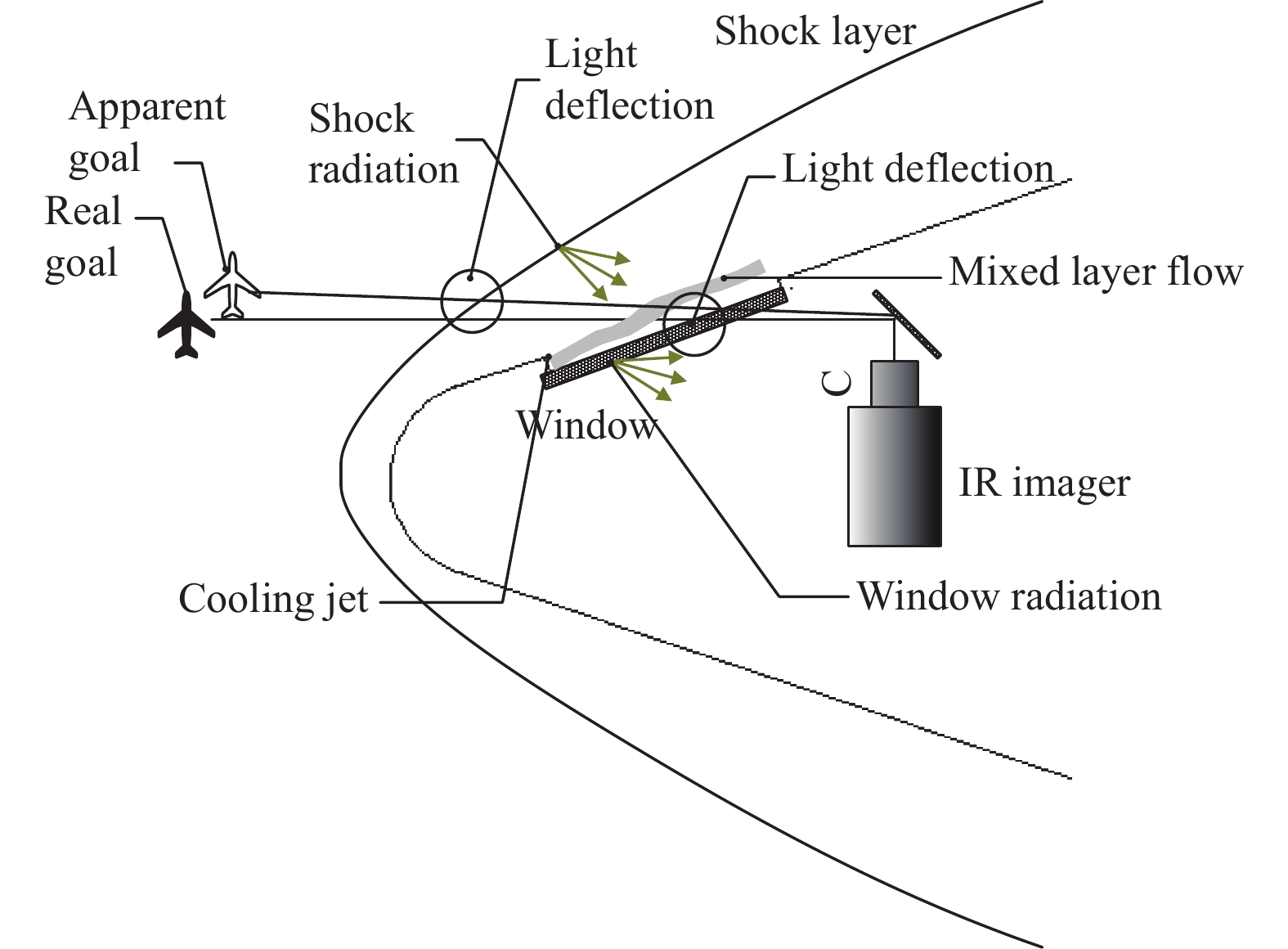


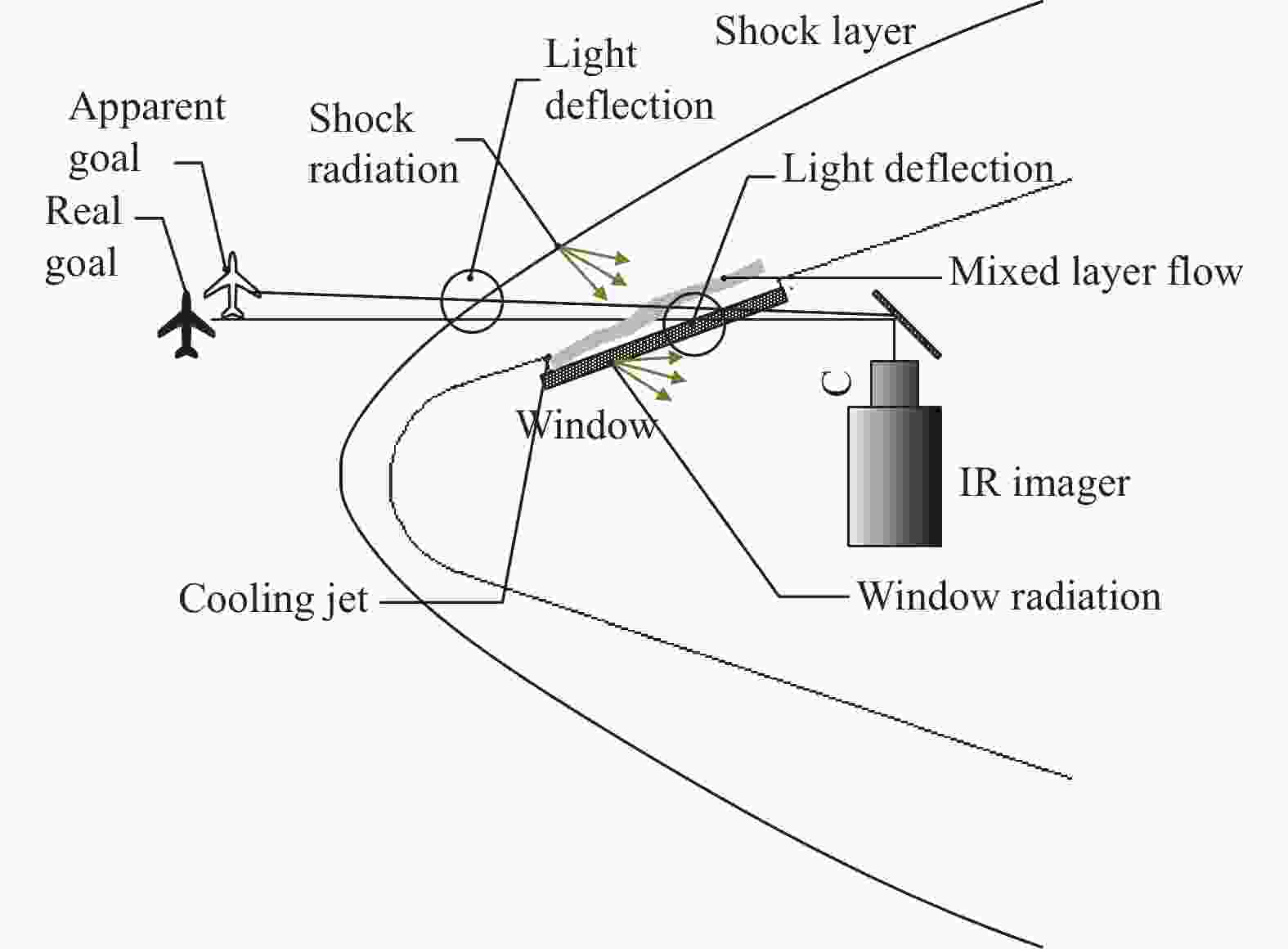

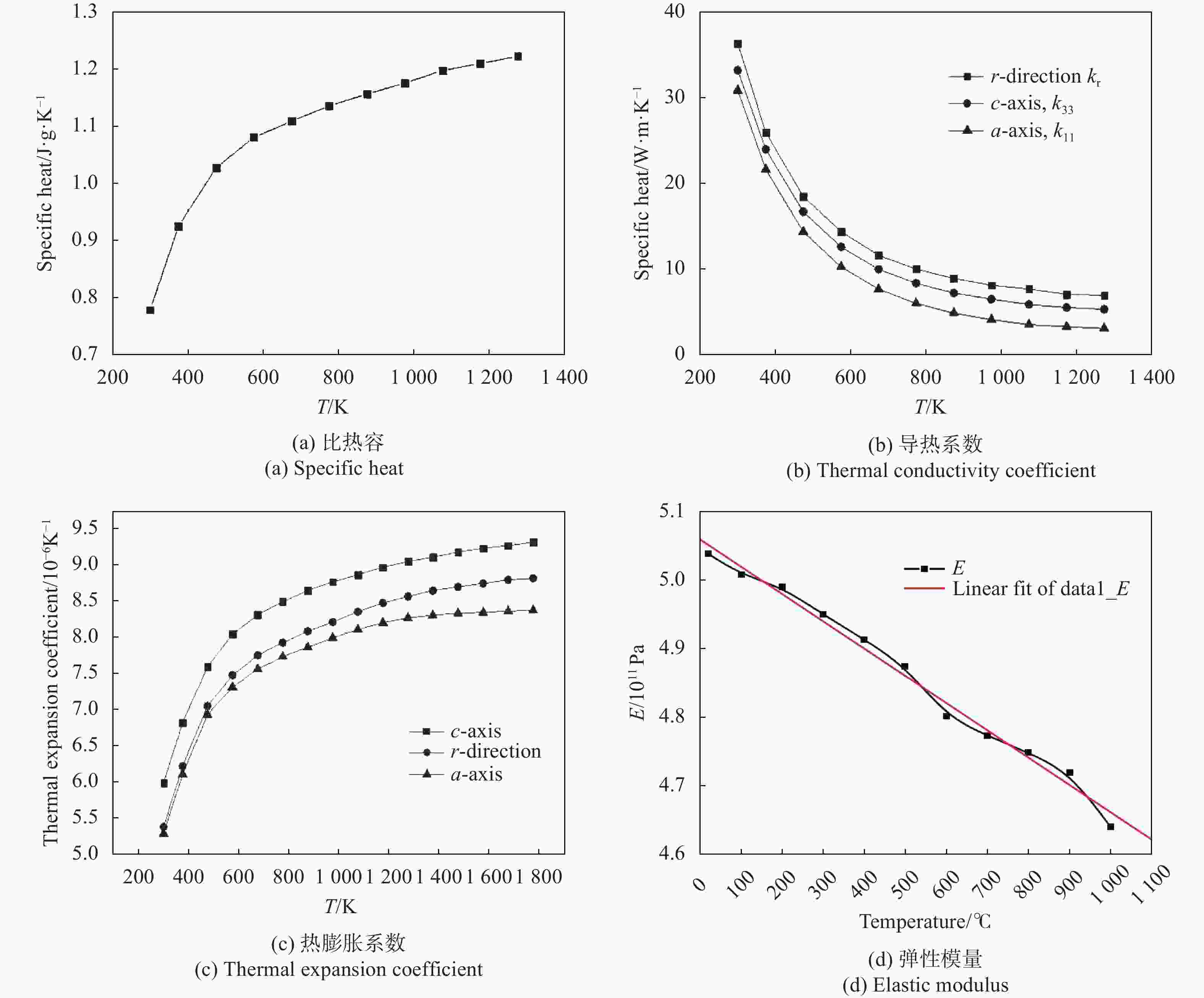
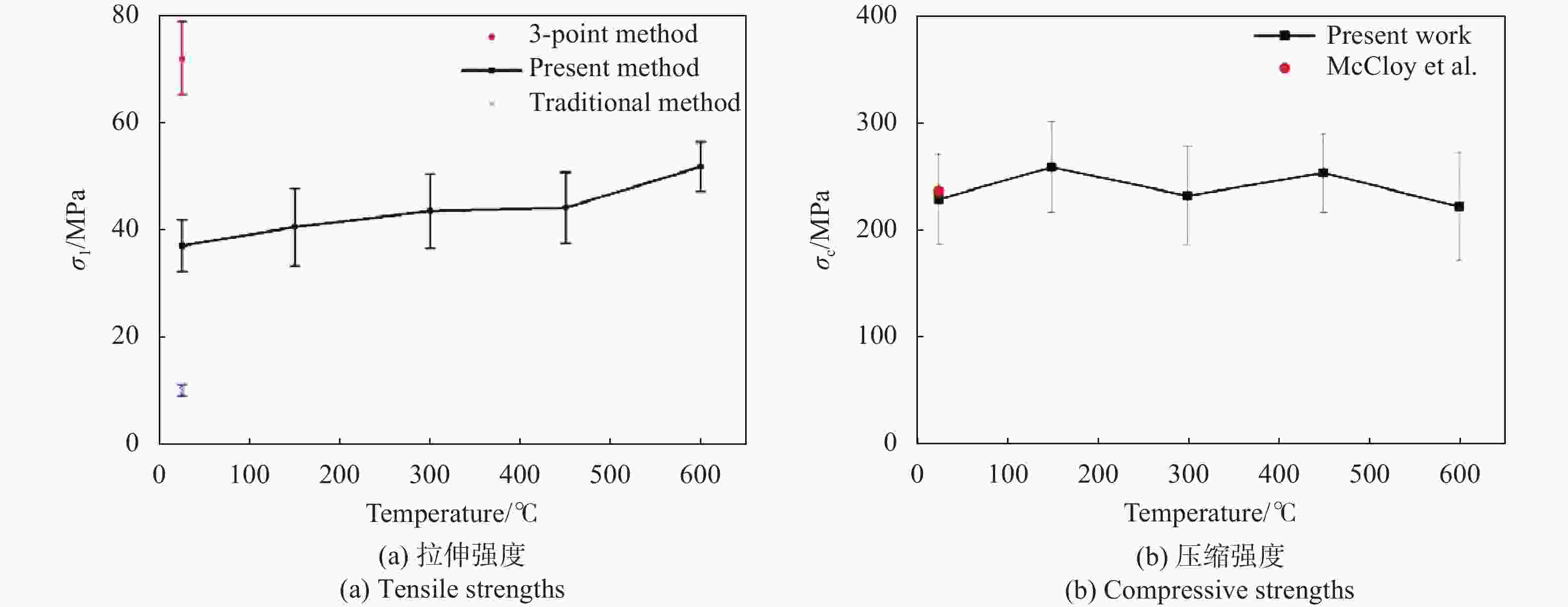






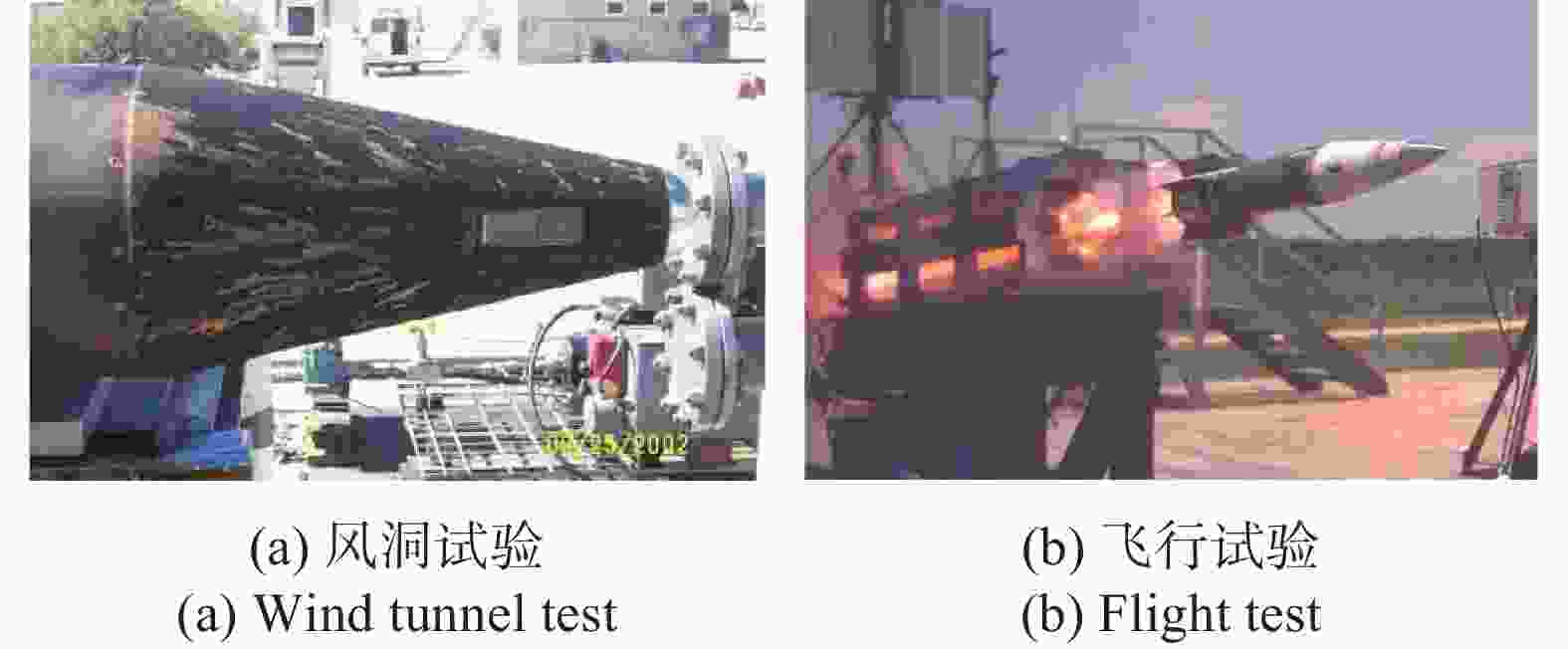


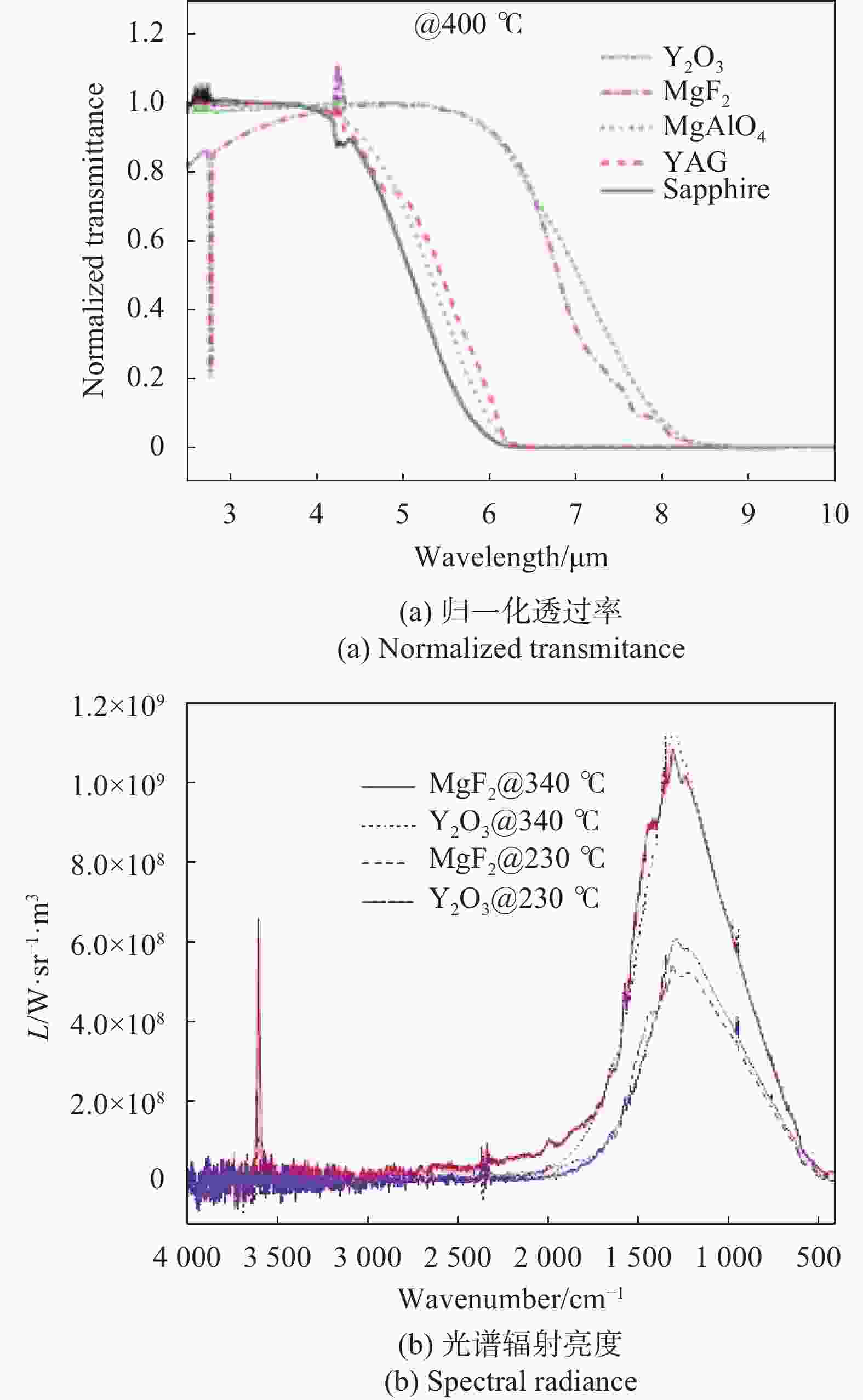
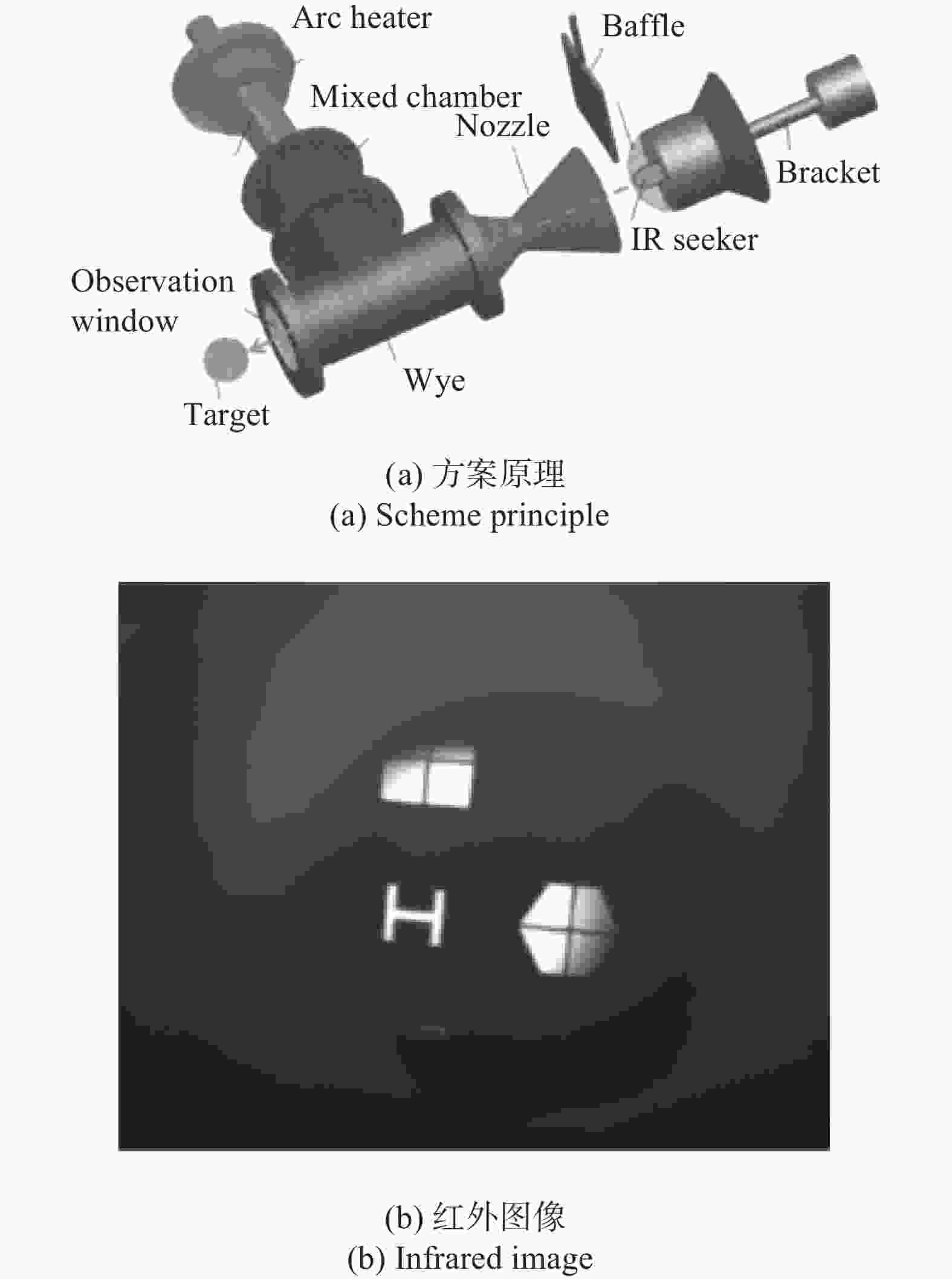


















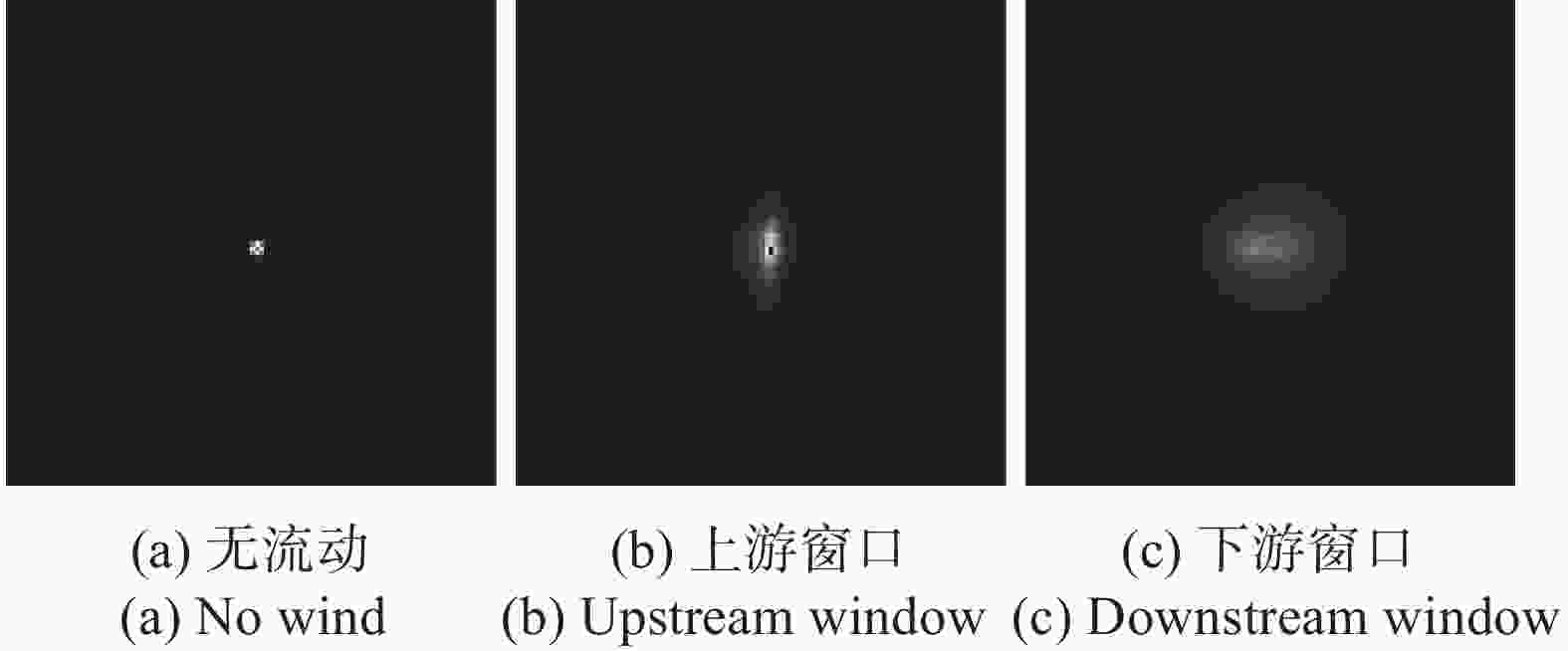

 DownLoad:
DownLoad:








